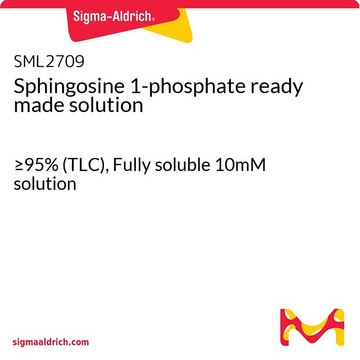860641P
Avanti
Sphingosine-1-Phosphate (d17:1)
Avanti Research™ - A Croda Brand
Sinónimos:
D-erythro-sphingosine-1-phosphate (C17 base)
About This Item
Productos recomendados
form
powder
packaging
pkg of 1 × 1 mg (860641P-1mg)
pkg of 1 × 5 mg (860641P-5mg)
manufacturer/tradename
Avanti Research™ - A Croda Brand
lipid type
sphingolipids
shipped in
dry ice
storage temp.
−20°C
SMILES string
CCCCCCCCCCCC/C=C/[C@@]([H])(O)[C@]([NH3+])([H])COP([O-])(O)=O
InChI
1S/C17H36NO5P/c1-2-3-4-5-6-7-8-9-10-11-12-13-14-17(19)16(18)15-23-24(20,21)22/h13-14,16-17,19H,2-12,15,18H2,1H3,(H2,20,21,22)/b14-13+/t16-,17+/m0/s1
InChI key
VITGNIYTXHNNNE-LHMZYYNSSA-N
General description
Application
Biochem/physiol Actions
Packaging
Legal Information
also commonly purchased with this product
Storage Class
11 - Combustible Solids
wgk_germany
WGK 3
Certificados de análisis (COA)
Busque Certificados de análisis (COA) introduciendo el número de lote del producto. Los números de lote se encuentran en la etiqueta del producto después de las palabras «Lot» o «Batch»
¿Ya tiene este producto?
Encuentre la documentación para los productos que ha comprado recientemente en la Biblioteca de documentos.
Nuestro equipo de científicos tiene experiencia en todas las áreas de investigación: Ciencias de la vida, Ciencia de los materiales, Síntesis química, Cromatografía, Analítica y muchas otras.
Póngase en contacto con el Servicio técnico



